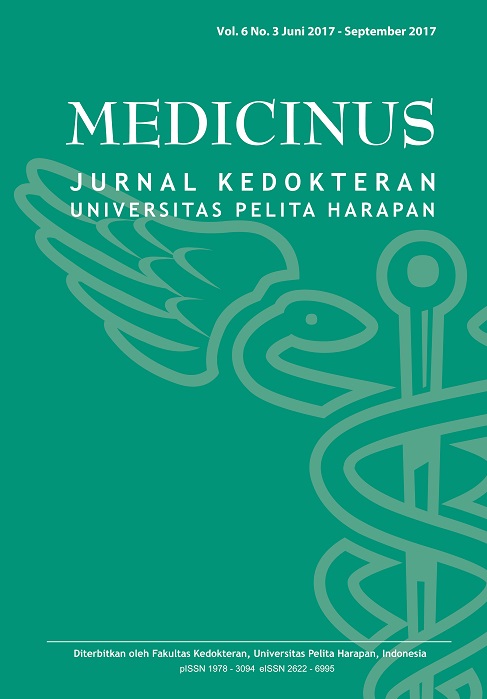Karakteristik Histopatologik dan Imunofenotipik Kanker Payudara di Rumah Sakit Cipto Mangunkusumo Jakarta, Indonesia
DOI:
https://doi.org/10.19166/med.v6i3.1147Abstract
Introduction: Breast cancer can be classified into luminal A, luminal B, Her2+, dan basal-like molecular subtype according to genetic profile and immunophenotype. The aim of this study is to assess histopathologic and immunophenotype characteristics of breast cancer in Cipto Mangunkusumo Hospital Jakarta, Indonesia.
Material and methods: This study is a cross-sectional retrospective study. The sample was 2632 breast cancer case in Department of Anatomical Pathology Cipto Mangunkusumo Hospital from the year 2011 until 2015. ER, PR, Her2, Top2 α, and Ki67 immunohistochemical stain was then grouped into luminal A (ER+/PR+/Her2-/Ki67<20%) subtype, luminal B (ER+/PR+/Her2-/Ki67‰¥20%) subtype, Her2+ (ER-/PR-/Her2+) subtype, and basal-like (ER-/PR-/Her2-) subtype. Kendall’s Tau analysis was done to assess association between sample characteristics and molecular subtype, association between top2α positive and molecular subtype.
Result: The most prevalent to the less prevalent breast cancer molecular subtype was luminal B (43,9%), Her2+ (14,6%), luminal A (14,0%), and basal-like (11,3%). There was a significant association between the tumor stage and breast cancer subtype (p=0,0001). There is also a significant association between Top2α expression and molecular subtype (p=0,0001).
Conclusion: The most prevalent breast cancer molecular subtype was luminal B. There was an association between breast cancer molecular subtype and a higher degree and Top2α expression.
Downloads
Published
How to Cite
Issue
Section
License
Copyright (c) 2018 Primariadewi Rustamadji, Stephanie Marisca

This work is licensed under a Creative Commons Attribution-ShareAlike 4.0 International License.
Authors who publish with this journal agree to the following terms:
1) Authors retain copyright and grant the journal right of first publication with the work simultaneously licensed under a Creative Commons Attribution License (CC-BY-SA 4.0) that allows others to share the work with an acknowledgement of the work's authorship and initial publication in this journal.
2) Authors are able to enter into separate, additional contractual arrangements for the non-exclusive distribution of the journal's published version of the work (e.g., post it to an institutional repository or publish it in a book), with an acknowledgement of its initial publication in this journal.
3) Authors are permitted and encouraged to post their work online (e.g., in institutional repositories or on their website). The final published PDF should be used and bibliographic details that credit the publication in this journal should be included.





